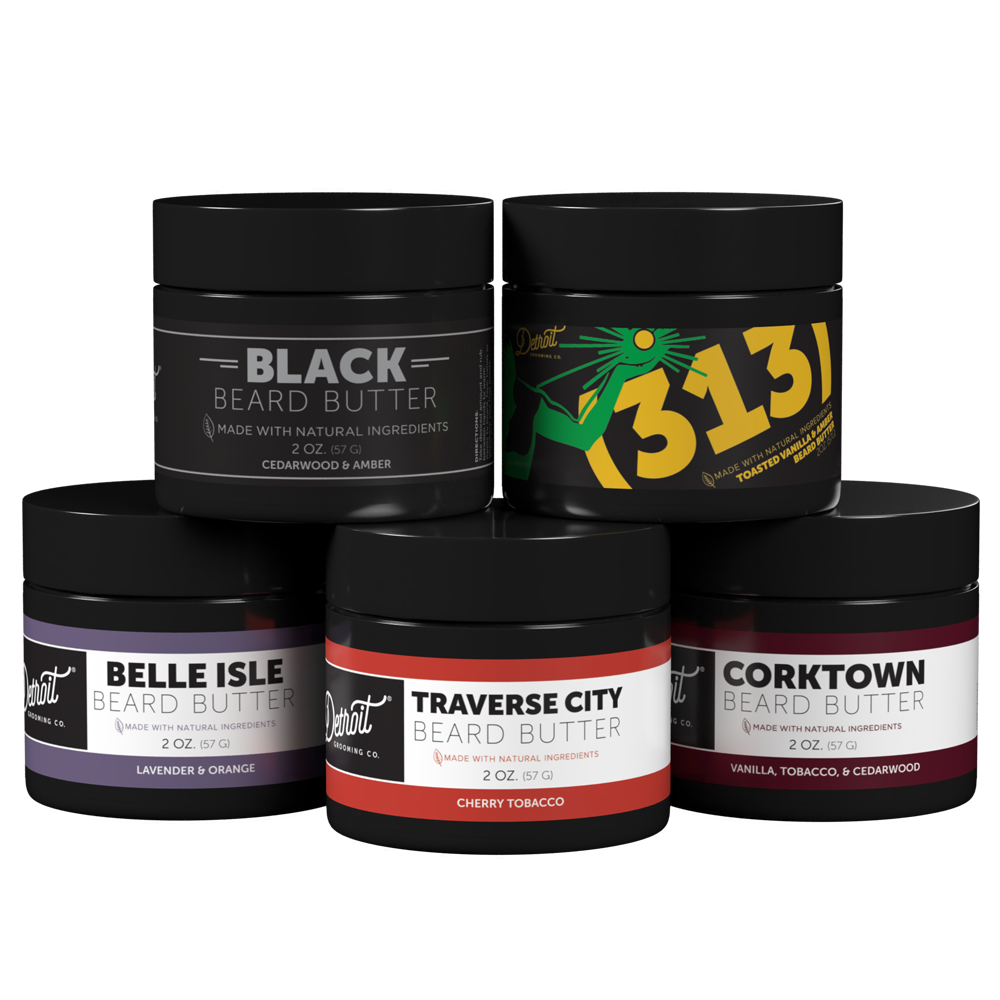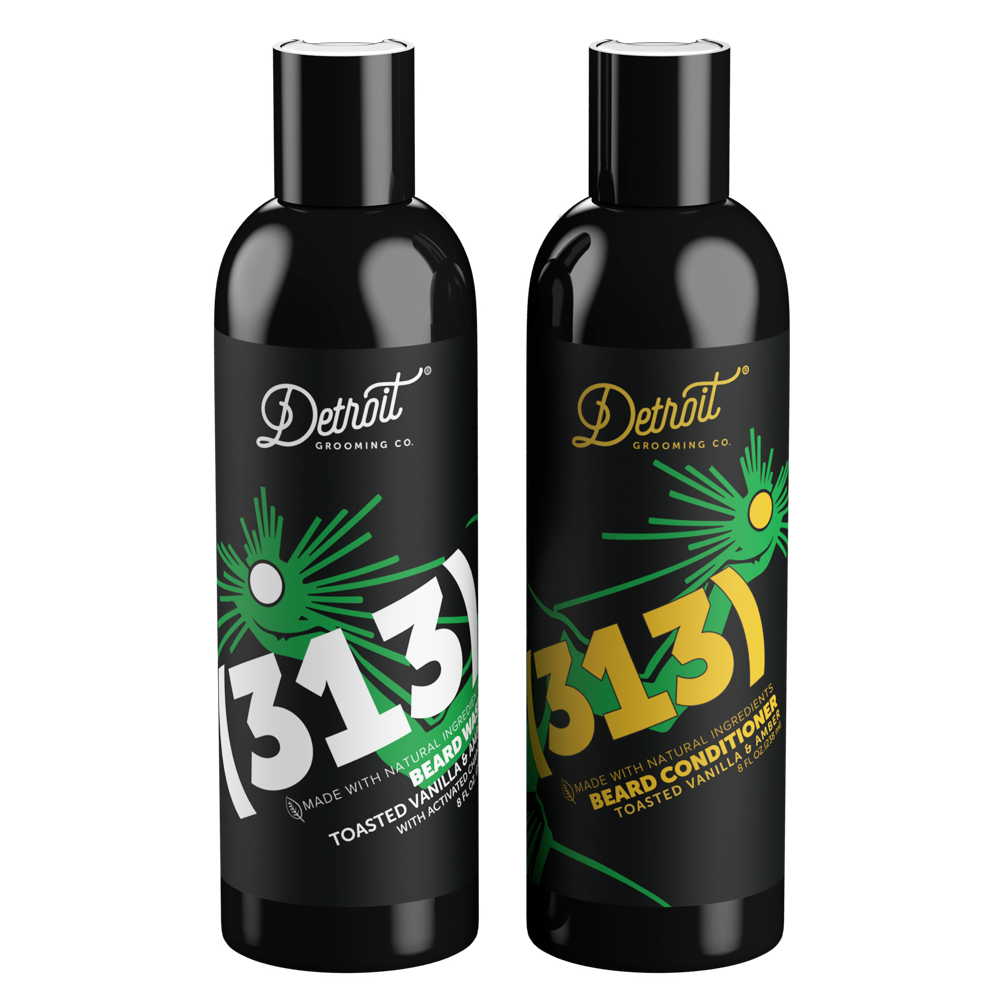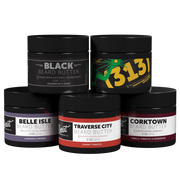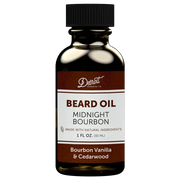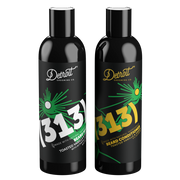Swimming provides a refreshing escape from the hot summer days and projects fitness and well-being. The downside is the potential damage that chlorinated waters can inflict on your splendid facial hair.
But taking a dip doesn't have to mean diving into beard damage. With pre-swim preparation, post-swim care, and regular maintenance, you can serve all that chlorine a major counterpunch and
retain your beard's health and vitality.
This summer beard care guide provides comprehensive tips and techniques to preserve your mane's magnificence—let's dive right in!
Effects of Chlorine on Beards
When it comes to maintaining a glorious beard, it's important to be aware of the potential impacts of chlorine.
Whether you regularly swim in chlorinated pools or expose yourself to chlorinated water, understanding the effects on your beard can help you take the necessary precautions and maintain a healthy and vibrant beard.
1. Potential Drying
Chlorine can strip moisture from various surfaces, including your beard. The chlorine in the water
removes the natural oils that keep your beard hydrated and manageable.
Exposure to chlorinated water can lead to dryness and make your beard more prone to breakage and frizziness.
To combat the potential drying effects of chlorine, consider the following tips:
Before swimming, apply a leave-in conditioner or beard oil to create a protective barrier between your beard and the chlorine.
After swimming, rinse your beard thoroughly with fresh water to remove any chlorine residue.
Moisturize your beard with
high-quality beard butter or oil to replenish lost moisture.
2. Discoloration
Another effect of chlorine on beards is possible discoloration.
Chlorine can cause light-colored beards, especially blonde or light brown ones, to turn a slightly greenish hue.
The discoloration becomes particularly noticeable in areas where the beard hair is more porous or damaged.
To tackle discoloration:
Use a clarifying shampoo specifically designed for beards to help remove chlorine buildup.
Consider using a
beard conditioner with color-correcting properties to counter any greenish tint.
If your beard is already discolored, consult a professional barber or stylist who can offer expert advice on color correction techniques.
3. Beard Damage
Chlorine exposure can lead to l
ong-term damage to your beard if not properly addressed.
The combination of drying and discoloration effects can weaken the hair fibers, making them more prone to breakage and split ends. Over time, this may result in a thinner and less vibrant beard.
To prevent beard damage:
Wear a swimming cap or use a guard specially designed to protect your facial hair while swimming.
Minimize exposure to chlorinated water and wash your beard thoroughly after swimming to remove chlorine residue.
Regularly trim your beard to eliminate damaged hair or split ends and promote healthy growth.
Remember,
taking good care of your beard is essential to maintain its health and appearance. Be proactive in protecting your beard from chlorinated environments.
How to Prepare Your Beard Before Swimming
Swimming can be an excellent exercise and a delightful way to cool off, especially during hot weather.
But you can’t carelessly jump into the water especially if you’re wearing a beard. You should know the potential damage of swimming in chlorinated water to your facial hair.
Thankfully, with a few preparations, you can protect your beard from harmful elements.
1. Wet Your Beard Before You Go Swimming
A good first line of defense is to thoroughly wet your beard before dipping into the pool.
Your hair acts like a sponge, soaking up any moisture it comes into contact.
Wetting your beard with clean, fresh water before swimming will minimize the absorption of chlorinated water, thus limiting the potential damage and dryness.
Here's a step-by-step guide:
Rinse your beard thoroughly under a shower or tap. Make sure every part of your beard is damp.
Gently towel-dry your beard to remove excess water, but leave it damp.
This step helps ensure that your facial hair has absorbed mostly clean water, reducing the amount of chlorinated water it can take up during swim.
2. Apply Beard Oil Before Your Swim
Applying a coat of beard oil before swimming can provide extra protection. Beard oil can create a barrier that reduces the chlorine your beard absorbs, minimizing the drying effects and damage.
Here's how to apply it:
Take a few drops of beard oil (the amount depends on the size of your beard).
Rub it between your palms to warm it up.
Massage it into your beard, making sure to cover all areas evenly.
Let it absorb for a few minutes before entering the swimming pool.
Detroit Grooming Beard Oil provides deep hydration and nourishment, keeping your beard soft, smooth, and healthy-looking.
3. Avoid Swimming for Long Periods of Time
Limit the time you spend in chlorinated or salty water. Longer exposure to these potentially harmful elements means more damage to your beard.
Here are a few suggestions:
Limit your swimming sessions.
Take regular breaks to rinse off in the shower. Reapply beard oil if necessary.
If you must stay in the water for extended periods, consider wearing a swim cap covering your beard or a full-face mask to limit water contact.
Swimming doesn't have to be a hazard for your beard.
Wetting your beard before swimming, applying beard oil before swimming, and avoiding swimming for long periods will protect your beard even as you enjoy your time in the water.
Proper Beard Care After Swimming
Just like the pre-swimming care routine, caring for your beard post-swim is equally crucial to maintaining the vitality of your facial hair.
Here's a guideline on how to properly care for your beard after swimming:
1. Rinse Your Beard with Cold Water After Swimming
Immediately after your swim, rinse your beard thoroughly with cold water. Doing so removes the residual chlorine or salt clinging to your beard hairs.
Stand under a shower or use a tap with cold water.
Gently massage your beard so that water washes all areas, removing all the chlorine or salt.
Don't rub too hard, as it might cause hair breakage.
2. Wash Your Beard with a Gentle Beard Shampoo
Next, wash your facial hair with a gentle, preferably sulfate-free, beard shampoo.
Apply a small amount of beard shampoo to your wet beard.
Gently work it in, creating a mild lather.
Rinse thoroughly to make sure no shampoo residue remains.
Remember, common hair shampoo might be too strong for facial hair, so always opt for a beard-specific product.
3. Condition Your Beard with a Beard Conditioner
Applying a beard conditioner restores any moisture lost while swimming. It can also make your beard softer and more manageable.
Follow the instructions on your specific beard conditioner bottle – some are leave-in while others require immediate rinsing.
Make sure you cover all your beard to moisturize every strand effectively.
Rinse properly.
4. Apply Beard Oil or Beard Balm
Finally, locking in moisture with nourishing beard oil or balm can help prevent further drying. It will also keep your beard looking and feeling its best.
If you're using beard oil, take a few drops, rub them between your hands, and then massage gently into your beard.
If you're more of a beard balm person, take a small amount, warm it up between your hands to soften, and then work it into your beard.
Both beard oil and beard balm can provide a protective layer that helps lock in moisture.
Proper beard care post-swimming is essential in maintaining a healthy, soft, and shiny beard.
Tips for Minimizing the Effects of Chlorine Exposure
While chlorine is necessary for maintaining cleanliness in swimming pools, it’s not necessarily beard friendly. Here are some practical tips to minimize the effects of chlorine:
1. Apply Beard Conditioner Regularly
Regular usage of a quality beard conditioner can be advantageous in combating the drying effects of chlorine.
Beard conditioners offer deep hydration, rehydrating the parched beard hairs caused by chlorine exposure and keeping them healthy.
Consider using a conditioner after every swim and in your daily grooming routine.
2. Use Beard Oil or Beard Balm Regularly
Beard oil and beard balms serve as effective moisture sealants.
They provide a protective layer around beard hair, preserving natural oils and preventing the drying effect of chlorine.
Try to apply it daily and certainly after every swim for maximum effect.
Choose a product with natural ingredients to avoid damaging chemicals.
3. Avoid Using Heat Styling Tools on Your Beard
Heat styling tools can remove the essential oils from your beard, leaving it more susceptible to chlorine damage.
Minimize the use of devices like straighteners or blow dryers.
Use them on a low heat setting and apply a protective layer of beard oil or balm afterward if necessary.
4. Get Regular Trims
Keep your beard healthy and free from split ends by getting regular trims.
It keeps your beard looking neat and helps remove damaged hair due to chlorine exposure, promoting healthier growth.
Either visit a professional barber or do it carefully at home with the right tools.
5. Avoid Heavily Chlorinated Swimming Pools
Lastly, if possible, try to avoid heavily chlorinated swimming pools.
The higher the chlorine content, the more damaging it can be for your beard.
Go for pools with low chlorine levels or alternatives like fresh or saltwater bodies.
Chlorine exposure doesn't have to mean the end of your beard's health. With proper preventive measures, you can minimize the harmful effects of chlorine and keep your beard at its finest.
In addition to beard routines, investing in high-quality beard care products can make all the difference in your beard.
Visit us at
detroitgrooming.com to discover your best beard yet.
The Bottom Line
Nothing should stop you from enjoying your summer, not even chlorinated pools! Taking care of your beard during
summer season should be as easy as 1, 2, 3.
Still, maintaining a healthy, strong, and impressive beard requires commitment.
Regular conditioning, utilizing beard oils or balms, refraining from heat-styling, getting routine trims, and carefully choosing a swimming environment can make a marked difference.
Remember, like every good thing in life, a gorgeous beard requires effort and patience.
With these strategies, you can confidently swim, knowing you have taken proactive steps to protect your facial hair.
Encountering chlorine might be unavoidable, but chlorine damage is not.
Stay resilient, stay majestic!


